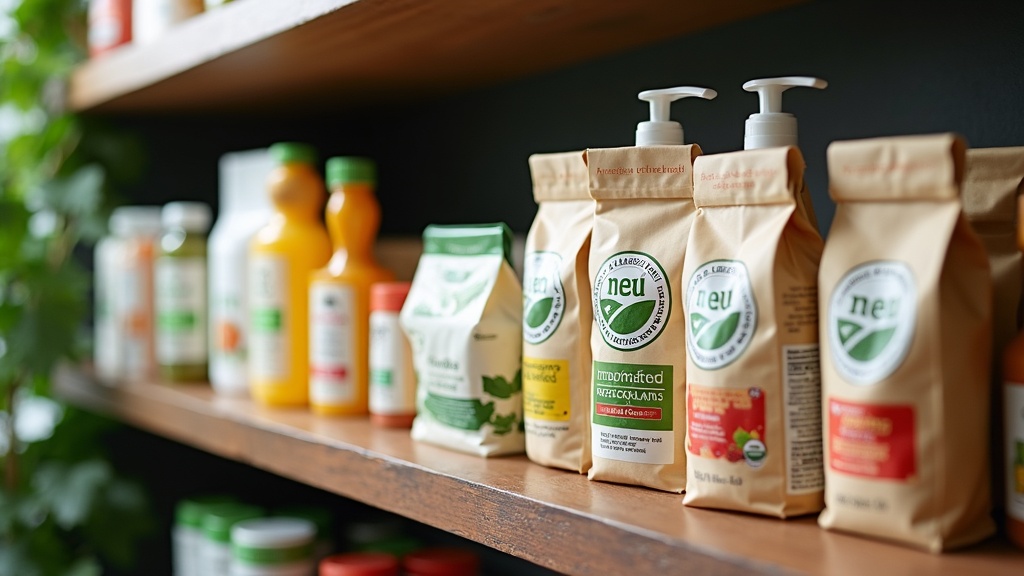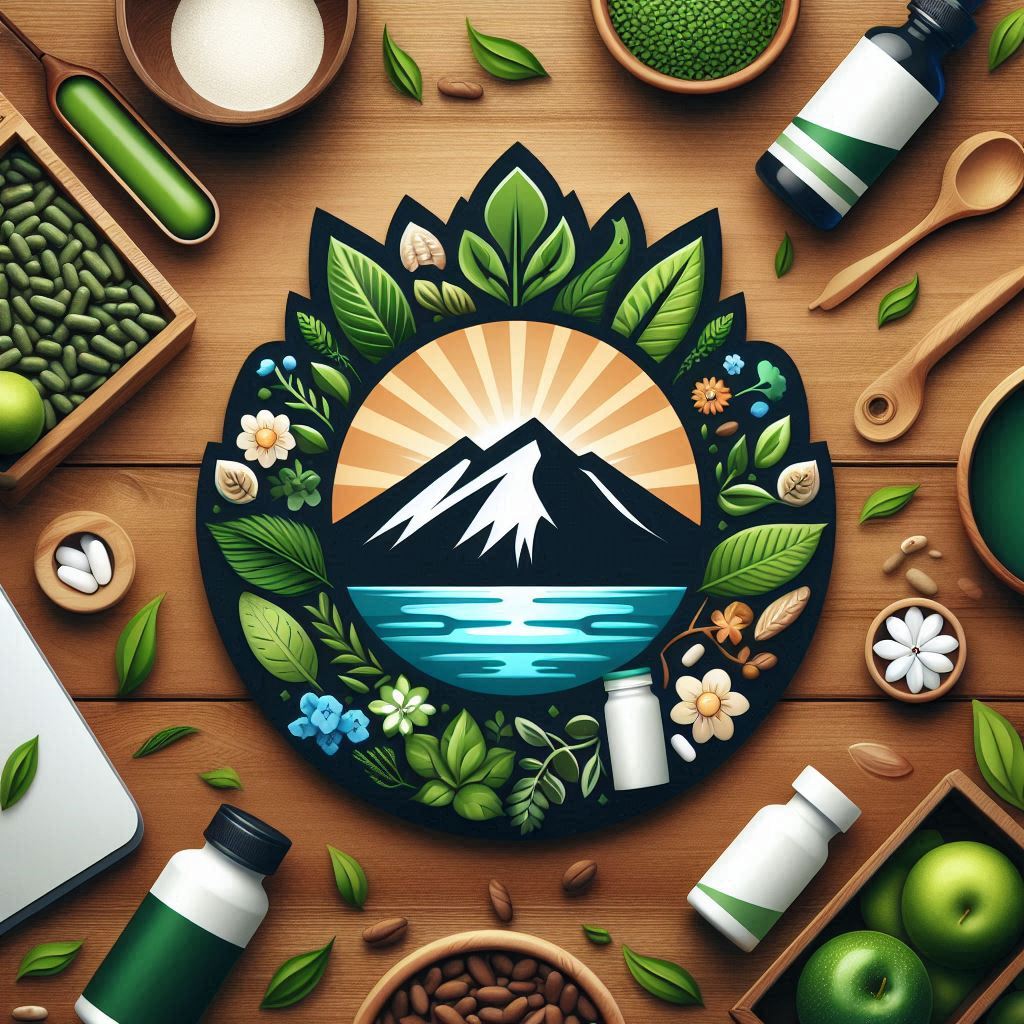 Choosing real certified organic products is one of the simplest ways to look after my well-being. From food to beauty products, those little seals hold a lot of meaning. The trouble is, not every label that says “organic” is created equal. The claims on packages can get confusing fast, making it hard to tell what’s really trustworthy.
Choosing real certified organic products is one of the simplest ways to look after my well-being. From food to beauty products, those little seals hold a lot of meaning. The trouble is, not every label that says “organic” is created equal. The claims on packages can get confusing fast, making it hard to tell what’s really trustworthy.
I’ve spent plenty of time figuring out which organic certifications actually mean something for my health and which ones are just marketing fluff. If you want to avoid pesticides and mysterious additives, these tips for spotting genuine certified organic labels can help you, too.
Here’s how I pick safer, healthier items in the store, all while steering clear of misleading claims and wasted spending.
1. Focus on Legitimate Organic Certifications
Real certified organic products all have one thing in common: clear, regulated seals from trusted organizations. These certifications don’t just show up after a quick review. Farms and companies have to put in real work, like regular inspections, paperwork, and ongoing checks, to get approved. The most common and strictest seals you’ll spot are:
- USDA Organic (USA): This seal only goes on products that contain at least 95% certified organic ingredients. It bans synthetic pesticides, GMOs, and antibiotics in food production.
- EU Organic (Europe): Guarantees products were made without GMOs or chemical fertilizers. It’s a popular standard for European goods.
- Canada Organic: Overseen by the Canadian Food Inspection Agency, requiring at least 95% organic ingredients. Equivalent to USDA in many areas.
- ACO Certified Organic (Australia): Indicates organic standards checked by Australia Certified Organic. It bans synthetic chemicals, herbicides, and GMOs completely.
- India Organic: Supervised under the National Programme for Organic Production, banning GMOs and synthetics as well.
- JAS Organic (Japan): Applies tough non-GMO rules and limits on synthetic additives during production.
When I see any of these official seals, I feel a lot more confident that the product really does meet meaningful organic standards. Anything else is worth double-checking, or skipping altogether if I can’t verify it.
2. Know What Each Label Actually Means
Even with the big certifications, a product’s front label can use all sorts of similar-sounding terms. Not all “organic” products are 100% organic. If you want the real deal, here’s how to make sense of common USDA organic labeling terms (most countries use similar standards):
| USDA Label | What It Means |
|---|---|
| “100% Organic” | All ingredients are certified organic, excluding water and salt. |
| “Organic” | At least 95% of ingredients are certified organic; up to 5% can be approved non-organic ingredients. |
| “Made with Organic Ingredients” | 70–94% organic; does not get the USDA Organic seal but must identify which ingredients are organic. |
| “Contains Organic Ingredients” | Fewer than 70% are organic; can’t display the USDA seal or claim “organic” on the main package front. |
If I want food or supplements made almost entirely from organic sources, I stick to “100% Organic” or at least products with the word “Organic” (95%+). For everything else, it’s just partially organic and might mix in some questionable extras, so I use my judgment.
3. Look for Bonus Seals That Add More Trust
Some products go above and beyond by picking up extra certifications. These add extra layers of safety and, honestly, peace of mind. If health and environmental choices matter to you, here are a few more seals I look for:
- Non-GMO Project Verified: Means the product’s production can’t use genetically modified organisms, which is a great bonus if you want to avoid GMOs entirely.
- Fair Trade Certified: Shows the workers and farmers were treated fairly and paid a fair wage, which also often connects to safer and higher-quality products.
- Certified Glutenfree: For anyone with celiac or avoiding gluten, this is a sure sign the product is truly safe from cross contamination.
- NSF/USP Verified (Supplements): These are third party checks for supplements, confirming what’s on the label matches what’s inside. This is super helpful for powders, herbal blends, and vitamins.
- Crueltyfree (Leaping Bunny): The product and its ingredients weren’t tested on animals, which is good to know for cosmetics and household items.
More certifications usually mean the company is working harder for quality, transparency, and safety. I usually reach for products that check both the organic seal and have at least one more of these bonus certifications if possible.
4. Always Check the Ingredient List, No Matter the Label
Organic seals get you far, but nothing beats turning the package over and reading the ingredients list myself. I look for:
- Whole food or plantbased ingredients first. If the first few ingredients are things I’d cook with at home, that’s a good sign.
- Simplicity. Short ingredient lists usually mean less processing and fewer random chemicals.
- Words I can pronounce. If there are lots of long, scientific names, I slow down and try to figure out what each one actually is. If I really want to eat or use it, I check for extra info.
And if something’s organic and simple, it’s almost always a better pick for health and low chemical exposure. The opposite is true when I see ingredient lists full of things like artificial colors (“FD&C Yellow No. 5”) or preservatives I don’t recognize, even if the front of the package looks “green.”
5. Watch Out for Greenwashing Tricks
Not every product with a leaf or the word “natural” on the front is trustworthy. Some brands bank on shoppers not checking past the packaging design. Here are some things I avoid:
- Buzzwords without backup. Words like “ecofriendly,” “farm fresh,” or “all natural” mean nothing unless there’s a certifier or official seal visible.
- Lookalike seals. If the organic seal looks off or isn’t from a certifying body I recognize, I make sure to investigate. Some companies add fake badges or tiny print that’s easy to miss.
- Tiny or hidden details. If certification info is buried in the fine print, that’s not a great sign for transparency.
- Super green packaging tricks. Packaging that looks brown, “earthy,” or loaded with leaves often means the focus is on image, not actual standards.
- Missing details about where or how it was grown or made. If the company is proud of its processes, they’ll usually highlight it clearly.
When in doubt, I search for the certifying agency named (if there is one) and check if it’s real and trusted. If not, I skip the product.
6. My GoTo Checklist for Organic Shopping
Over time, I’ve built up a solid checklist that helps me get what I actually want without frustration or wasting extra cash on marketing hype:
- Doublecheck for recognized organic seals. I look for USDA, EU, ACO, JAS, or other national certifiers—especially for imported products.
- Read the full ingredient list every time. More transparency and fewer questionable ingredients always wins.
- Pick products with multiple certifications for added trust. Organic plus NonGMO or Fair Trade is always good to see.
- Don’t get distracted by green buzzwords without proof. No seal? That’s a no for me.
- Research the brand if it’s new to me. A quick search of the brand’s reputation can say a lot about how honest they are.
- Check for batch codes and expiry dates. Authentic certified goods almost always display clear batch information and expiration dates, showing a concern for quality control and traceability.
Keeping these steps in mind reduces confusion and makes store trips way more efficient. Over time, it gets easier to spot brands that really deliver on their claims.
7. Why Trusted Organic Seals Are Worth It
I know shopping this way can take a little extra time at first, but it really pays off. With truly certified organic products, I’m lowering my exposure to pesticides, synthetic additives, and questionable chemicals. It usually means better animal welfare and fairer labor practices, too.
If you care about what goes on (and in) your body or want to avoid supporting companies that just want to cash in on trends, these tips offer a clearer path. I find that shopping for authentic organic products gets easier with practice—and eventually, you get fast at telling the real thing from marketing tricks or imposters.
8. Extra Resources for Safe Organic Choices
For anyone who wants to dig into specifics, check out these resources I keep handy to help double-check both products and certifiers:
- USDA Organic Information (usda.gov)
- National Organic Program Database (usda.gov)
- Non-GMO Project Directory
- Fair Trade Certified Product Finder
- Environmental Working Group’s Shopper’s Guide to Pesticides in Produce
Keeping these links handy is pretty useful if you come across a brand or label you aren’t sure about. They help shine a light on details that aren’t always clear on the package itself.
Wrapping Up
The real value of choosing certified organic labels is peace of mind. I know that I’m getting safer, cleaner products and supporting a better kind of food and beauty industry overall. A little careful research goes a long way, especially now that clever packaging and labels are everywhere. With some extra attention to the details, choosing organic is a smart move for my body, the environment, and even the people making these products.
